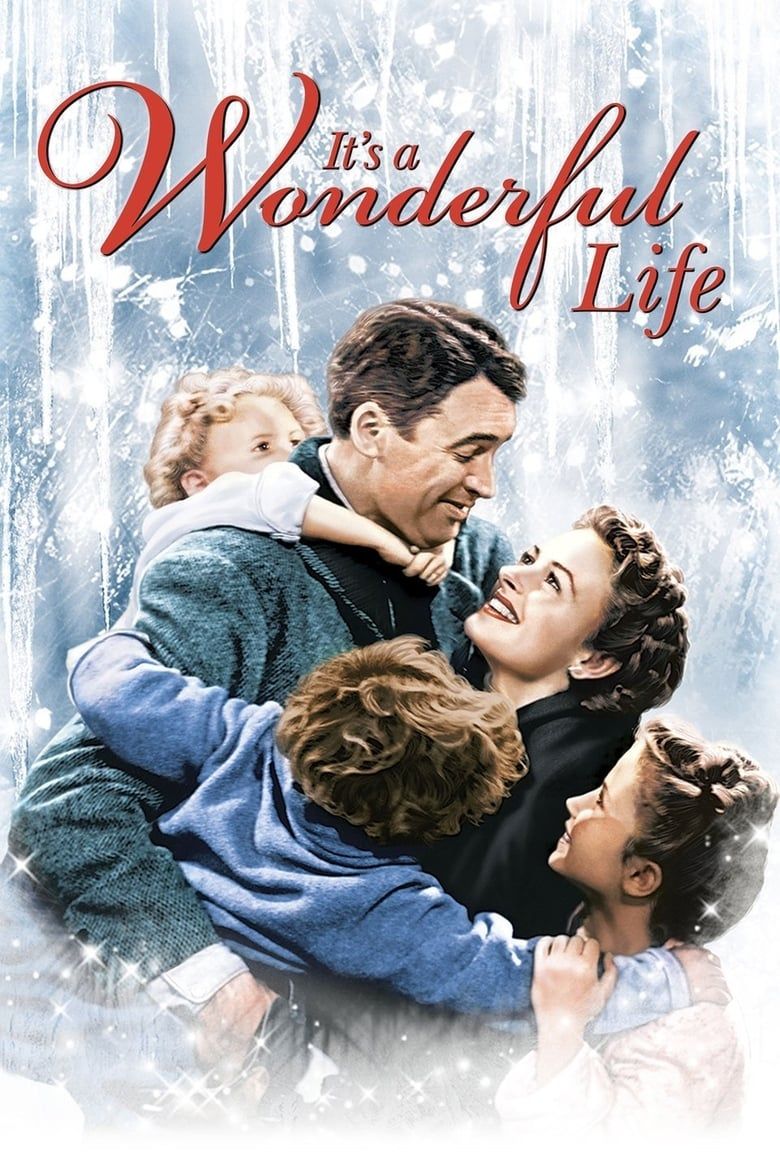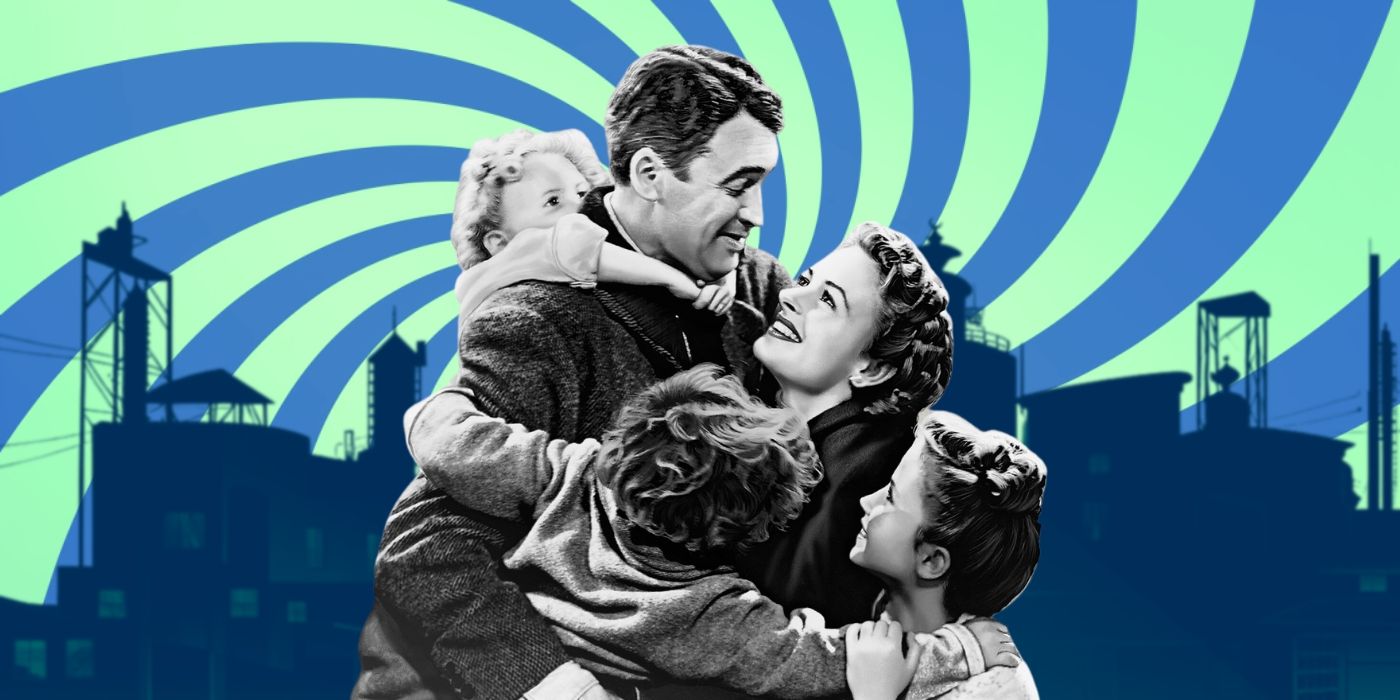The Big Picture
- The film It's a Wonderful Life positions George Bailey as the hero, but a close reading reveals that his wife, Mary, is the one who truly holds the family together and saves the day.
- Mary's actions, such as offering up their honeymoon money to save the community during the Great Depression, and fixing up their house while George deals with business issues, demonstrate her resilience and productivity.
- The film subtly reflects on gender roles and the treatment of women in patriarchal societies, highlighting Mary's ingenuity and suggesting that It's a Wonderful Life is social commentary on the importance of women in familial and communal situations.
It’s a Wonderful Life is one of the most beloved Christmas movies of all time, but there’s more to the film than just holiday cheer. It's a Wonderful Life positions its main character, George Bailey (Jimmy Stewart), in the role of the hero, as it appears as though George’s good works ultimately helped save his family and community throughout economic hardship. However, a close reading depicts many of his responses to hardship as less than admirable. Instead, his wife, Mary (Donna Reed), is the one who really holds the family together and makes it possible for George to succeed.
It's a Wonderful Life follows George on Christmas Eve as he contemplates taking his own life. Before he can take any serious action, an angel named Clarence (Henry Travers) appears and begins to show George how the lives of people around him would have been different if he were not there to intercede. Many of the scenarios that George must grapple with would be frustrating for anyone, thus in many cases George’s emotional responses make sense. However, Mary bears almost identical burdens and always responds productively.

It's a Wonderful Life
An angel is sent from Heaven to help a desperately frustrated businessman by showing him what life would have been like if he had never existed.
- Release Date
- January 7, 1947
- Director
- Frank Capra
- Cast
- James Stewart , Donna Reed , Lionel Barrymore , Thomas Mitchell
- Runtime
- 131
How Does Mary Save the Day in 'It's a Wonderful Life'?
George and Mary get married and are about to leave on their honeymoon when word comes that the loan company George works for has financially collapsed, implying the beginning of the Great Depression. George attempts to placate the angry crowd before they return to buy their shares from the evil Mr. Potter (Lionel Barrymore) at half price. In the corner of the room, Mary holds up the stack of cash the couple intended to use for a honeymoon and a house. She publicly offers up the money. George catches on and begins to distribute the money, saving the loan company and the community.

'It's a Wonderful Life' Is Way, Way Darker Than You Remember
'It's a Wonderful Life' is not the bright Christmas movie you remember. The Frank Capra, Jimmy Stewart classic is much, much darker.George is understandably a bit forlorn after the incident at the company. He receives a phone call and is instructed to come home, though he states that he doesn’t know where home is. The cab driver takes him to an old house that Mary and George used to walk by when they were younger. Mary has presumably purchased the house, prepared dinner, and made it habitable in the time that George dealt with the business crisis. She has a smile on her face as he walks in the door.
What Happened to the Bailey Family During WWII?
It's a Wonderful Life goes on to depict what happened to the Bailey family during World War II. Mary and George had four children. George was not able to serve in the army because of a bad ear, so he worked on rubber drives and air raid patrols. Mary fixed up the entire house, joined the war effort in preparing food for soldiers, and raised the children. The war montage ends, and It's a Wonderful Life picks up on Christmas Eve, right after the end of the war. George’s Uncle Billy (Thomas Mitchell) has $8,000 cash that must be given to a bank for the loan company’s collateral. A short mishap sees Billy accidentally hand the money off to Potter, who wants to see the Bailey company’s demise.
Billy and George cannot find the money, and a warrant is issued for George’s arrest. He returns home to his children and throws a temper tantrum, complaining about everything from the house Mary worked so hard to fix up to the fact that he has children. He yells at one of his daughter’s teachers on the phone and crashes his car. Mary does her best to protect her children and reminds them all to pray for George.
The sequence that follows is It's a Wonderful Life's most famous. George meets Clarence and learns the impact his life has made on others, even though it wasn’t the life he wanted when he was young. When he returns from the vision, he runs home joyful, but with the understanding that he doesn’t have the money, so he will go to jail. However, while George was learning a life lesson, Mary took the time to solve the problem. She rallied the neighbors who have been helped by the loan company, who are able to provide the money and save George and the business.
Why Is Mary the Real Hero of 'It's a Wonderful Life'?
George’s journey is extremely poignant, even years after the release of It's a Wonderful Life. However, it is apparent that Mary is the reason things worked out for George throughout his life. If Clarence had shown George a scenario in which he never married Mary, life in Bedford Falls would have likely been bleaker than ever. It’s famous for being one of the best holiday movies ever made, but It’s a Wonderful Life is also significant because of its observations on gender.
The film is a subtle portrayal of the way that women were (and often still are) treated in relation to the patriarchal structures of modern society. George is repeatedly allowed grievances because of a situation that would trouble anyone regardless of gender, but Mary is expected to bear George’s burdens with a smile on her face. The fact that it is Mary’s ingenuity that saves the day suggests that It's a Wonderful Life is at least slightly aware of the kinds of gender roles it means to portray, thus reading It’s a Wonderful Life as social commentary is not far-fetched by any means.
Significantly, It's a Wonderful Life employed a female screenwriter on its team of three. Two of the screenwriters, Frances Goodrich and Albert Hackett, were then married. Though there’s no official documentation about the inspiration behind It's a Wonderful Life, it is safe to infer that the onscreen relationship could have only been written by two collaborators who understood the importance of the presence of women in familial and communal situations.
It’s not a perfect film by any means (the depiction of Mary’s life without George leaves something to be desired in the name of feminism), but ultimately it’s a brilliant one. Frank Capra’s classic film teaches a story about how even the smallest kindnesses change the trajectory of those around us and reminds us that family and community are to be valued above all else. As such, It’s a Wonderful Life has become one of the most well-known and important movies ever made. We just have to remember to see things from Mary’s perspective.
It's a Wonderful Life is available to stream on Amazon Prime Video in the U.S.

